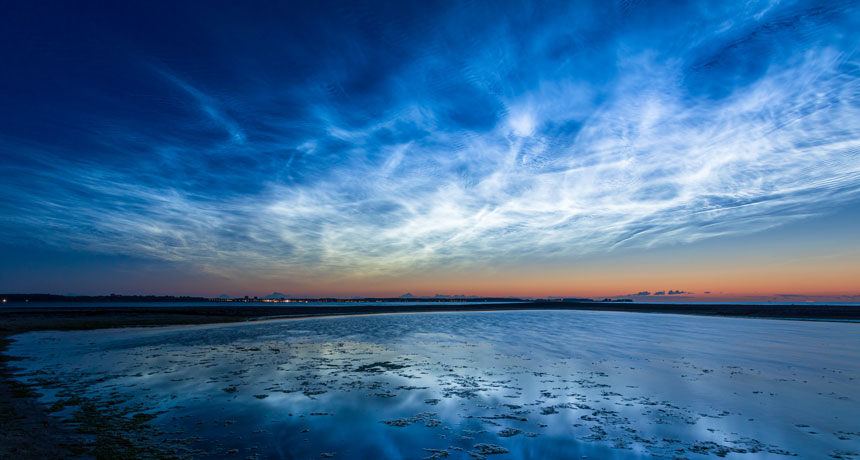Space contains tons of dust. When dust particles approach Earth, they can be captured by gravity and enter the atmosphere at very high speeds.
Particles with diameters larger than about 2 millimeters undergo very rapid heating through collisions in our atmosphere. As they heat up, they can produce a short-lived trail of light known as “shooting star.” Most dust particles entering the atmosphere are estimated to be much smaller than this and don’t provide a visible trail.
The dust aids with the formation of “noctilucent” clouds — the highest clouds in the Earth’s atmosphere — by providing a surface on which ice crystals can form. Noctilucent clouds develop during summer in the polar regions.
A micrometeorite is a small dust particle that reaches the Earth’s surface. They are a few tenths to hundredths of a millimeter in size. Antarctica is a good place to look for micrometeorites because of the low accumulation of snow and the virtual absence of ground dust. After a 20-year collection of extraterrestrial particles in Antarctica, a peer-reviewed publication estimates that every year over 5,000 tons of space dust fall on Earth. For reference, the average U.S. car weighs about 2 tons.
While small in size, over time space dust can add up. On geologic time scales, the dust fall could have delivered significant amounts of water to our atmosphere. They also can fall in the ocean, fertilizing marine phytoplankton with iron.
The micrometeorites undergo change as they pass through our atmosphere colliding with molecules. One way to capture this dust before it enters our atmosphere is to fly through comet tails. The NASA mission Rosetta discovered free oxygen in a comet coma, or tail. NASA’s Stardust mission flew through the tail of comet, collected dust and returned the particles to Earth for analysis. That mission found glycine, an amino acid in the coma.
Steve Ackerman and Jonathan Martin, professors in the UW-Madison department of atmospheric and oceanic sciences, are guests on WHA radio (970 AM) at 11:45 a.m. the last Monday of each month. Send them your questions at stevea@ssec.wisc.edu or jemarti1@wisc.edu.


